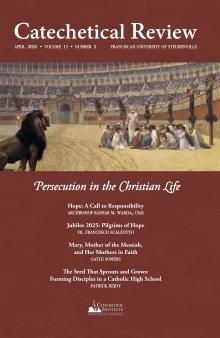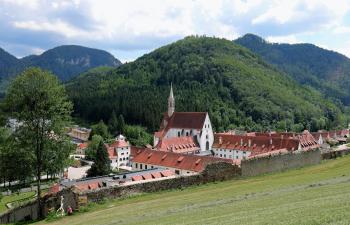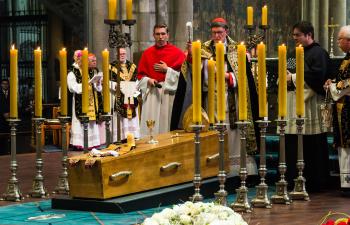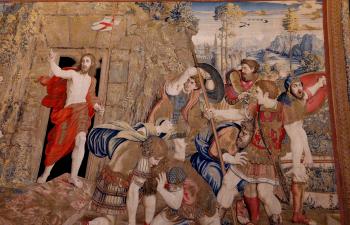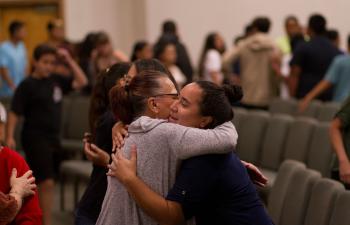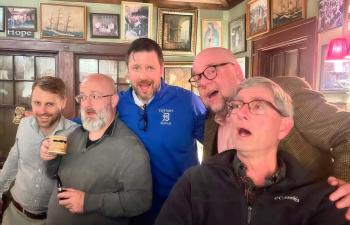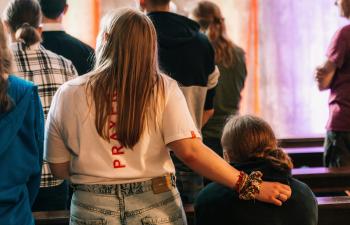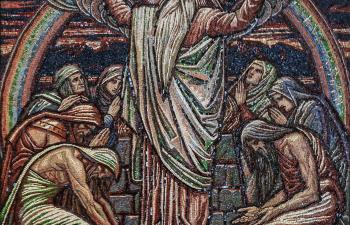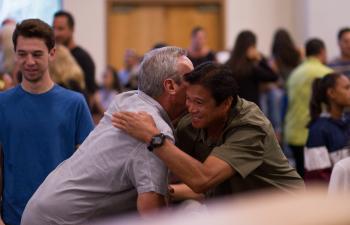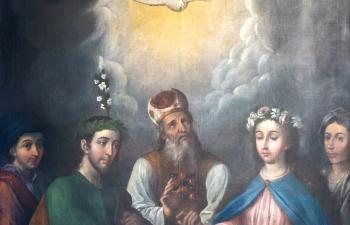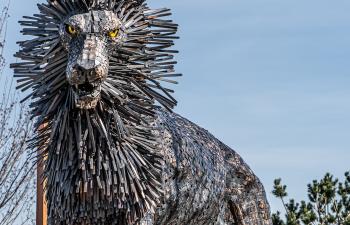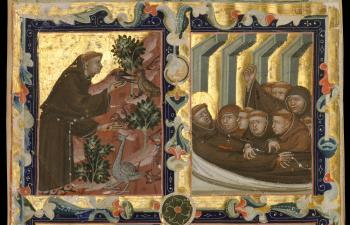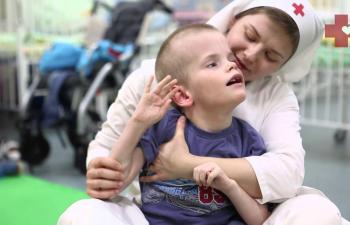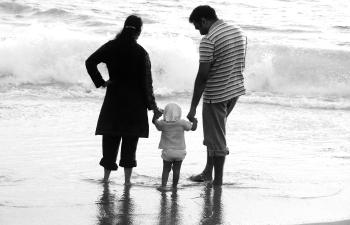Art: The Holy Family with Mary Magdalen by El Greco.
Framed: 160 x 131 x 7.5 cm.
(Spanish, 1541–1614). The Cleveland Museum of Art.
https://www.clevelandart.org/art/1926.247
The work of Doménikos Theotokópoulos (1541–1614) stands out among the painters of the late Renaissance and Mannerist period. A native of the Greek island of Crete, he became established as an iconographer before moving to Venice to study the oil painting techniques of the late Renaissance. Adopting the name “El Greco” (the Greek) while in Italy, he mastered the naturalism and color quality of the Venetians before moving to Rome in 1570. He settled in Toledo, Spain, in 1577, where he found a spiritual climate, influenced by St. Teresa of Ávila and St. John of the Cross, infused with a sense of mysticism that complemented the Eastern tradition. In this environment, El Greco moved beyond the naturalism prized within the Renaissance, seeking rather to depict a supernatural reality that is inherent to iconography. While continuing to use much of the visual language from his Italian training, his liberty in style and his original depiction of the saints suggests an approach that is both traditional and inspired by the religious thought of his Byzantine roots and Spanish context. This can be seen in his painting titled “Holy Family with Mary Magdalene” (1590–1595). By portraying the distinct qualities of each figure in relation to the Incarnation, El Greco offers a mystical interpretation of the Holy Family that invites all hearts to unite with God through Christ.
Although the painting is identified as a Holy Family scene, it could just as easily be understood as a painting of the Madonna enthroned with surrounding saints. The traditional identification of Mary as the Seat of Wisdom recognizes her child as the central subject, and she as his throne. Rather than follow the guide of classical proportion, her body is elongated to convey an elegance that hints at the heavenly reality in the seemingly natural scene. While some art historians see El Greco’s liberty with anatomy as similar to his Italian Mannerist peers, the stylization seems more in the tradition of iconography, in which a transfigured anatomy and reverse perspective present the image as a window into heaven.[1]
The rest of this online article is available for current Guild members.
[1] El Greco’s “The Burial of the Count of Orgaz” (1586–1588) exemplifies his different treatment of heavenly and earthly figures, with the figures in the bottom half of the painting depicted with natural proportions and the heavenly figures elongated to convey existence infused with divine grace.
[2] See Council of Trent, “On the Invocation, Veneration, and Relics of Saints, and on Sacred Images,” (1563), session 25.
[3] St. John of the Cross, The Dark Night, in The Collected Works of St. John of the Cross, rev. ed., trans. K. Kavanaugh and O. Rodriguez (ICS Publications, 1991), bk. 2, 13.6.
This article is from The Catechetical Review (Online Edition ISSN 2379-6324) and may be copied for catechetical purposes only. It may not be reprinted in another published work without the permission of The Catechetical Review by contacting [email protected]



